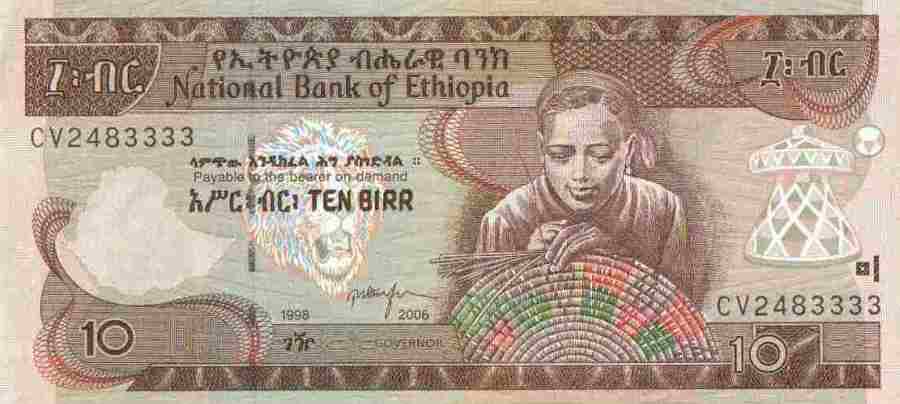Ethiopia is one of the countries in East Africa popular for its diverse cultural destinations. It is a country that is filled with very interesting historical sights, religious festivals, excellent mountains for riding motorcycles through as well as trekking and a lot of isolated tribes.
This country is landlocked and is bordered by Kenya, Sudan, Eritrea and Djibouti. Its capital city is Addis Ababa and it has a population of over 75 million people. Amharic is the country’s official language. Some of other widely spoken languages are Arabic, Somali, Oromigna, Guaragigna and Tigrinya. English is the language that is taught in their school’s curriculum.
Ethiopian currency is referred to as the Birr. 1 Birr is basically separated into 100 cents. The Ethiopian Birr notes are 100, 50, 10, 5 and 1. The Ethiopian Birr is very established with tight control, hence, there is no noteworthy diversity between the black market and the official rate for the currency converter.
In this article we are going to discuss deeply on the Ethiopian Birr based on some subheadings as stated below:
Brief History of Ethiopian Birr
Just like the other countries in Africa, Ethiopia was also using the barter trade as a mode of exchange. With time, they started coming up with a more advanced and efficient mode of exchange. During the colonial era, they were able to resist the Italian colonial interest in their country on the battle of Adowa. Since they didn’t have the colonialists to tell them about how the currency works, it was hectic for them to come up with a currency.
Ethiopian birr has a great history since 1974 when all the banking institutions were made national after the formation of the Declaration of Socialism. President Haile Selassie was in power at the time when the birr was transitioning. Looking down the history, it really shows that birr transition was at par with country’s economy.
Transition of Bank Notes
The transition of the notes was greatly enhanced by the GDP and returns that came from the major exports such as oil pulses and seeds, coffee, livestock and textiles. Coffee provides 27% of the country’s foreign exchange returns. More than 16 million people get their incomes from this crop hence these also encouraged the transition of the notes. The exchange needed to be done by use of notes, thus the National Bank of Ethiopia opted to come up with notes that will be used for this course.
Read: Interesting Facts About Tanzania Shilling
Coins Denomination
Maria Theresa Thaler was adopted as a standard coin in Ethiopia in 1855. Hence in 1908, a new Ethiopian coin was introduced. The silver birr retained its fineness and same weight as the old one. The cash of the account now became 1 birr=32 bessa=16 ghersh.
The copper coins introduction was between 1894 and 1897 and they were in denominations of 1/32 and 1/100 birr. In 1944, coins were introduced again with copper 1, 5, 10 and 25 santim and the silver 50 santim. The second series was given in 1977, consisting of 10 santim, brass 5 and aluminium 1 santim. The most recent offers are 1 Birr EE2003, 50 santim EE1996, 25 santim EE1996, 5 santim EE1998.
Exchange rate of Ethiopian Birr
There is no restriction towards the amount of the foreign currency that is imported into Ethiopia, although it’s a must it should be checked and recorded on arrival by use of the currency declaration form. The foreign currencies are only converted at authorized hotels and banks in order to monitor the exchange rates closely. The declaration form for the currency will be needed by the customs at the departure. Visitors are allowed to convert excess birr to foreign currency before their departure at the airport, but it’s a must that you produce all receipts for the exchange transactions in addition to a currency declaration form.
The National Bank of Ethiopia monitors the exchange rates and here are some of the major exchange rates:
- 1 USD = 18.878 ETB
- 1 EURO = 0.7567 ETB
- 1 Indian Rupee = 65.2455ETB
- 1 Japanese Yen = 99.1205 ETB
- 1Australian Dollar = 1.0890 ETB
- 1 British Pound = 0.6398 ETB
Bear in mind that these values are highly volatile just like every other country’s currency and is highly subject to changes at the international trade market governed by demand and supply.
Ethiopian Birr as a National Heritage
Ethiopian Birr depicts a lot of national heritage due to the images that it has. The empress Zauditu silver pattern birr EE1917 was introduced in 1925. This extremely exotic and rare pattern was not known by Gill when he wrote the ground-breaking reference concerning the coins in Ethiopia. The 100 Ethiopian Birr of 2004 has the picture of a lion head to depict the country’s position as a safari destination, a farmer ploughing; meaning that agriculture is an integral part of the country and a man with a microscope in a laboratory depicting how the country has embraced education and is aiming to be at the forefront of research and development. All these images symbolize a sense of national heritage.
You can also read our article on Interesting Facts About the Ugandan Shilling.
From this article, you should be able to know various facts about the Ethiopian Birr. Although the country has a poor economy, they really appreciate their currency based on its history and how it has assisted them very much on the foreign exchange and international market.
